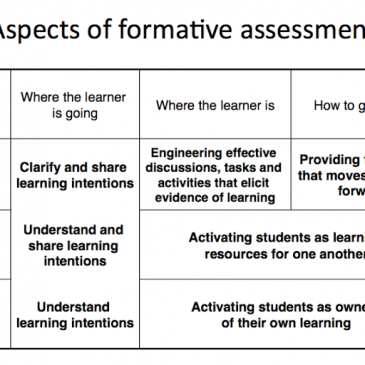There is an enduring tension between getting every student to meet a common standard and honoring their individuality in how they attain that common standard. Teachers have for years resolved this by helping students in a more individual way while still supporting whatever the standards are for their curriculum domain. This becomes harder as some students need a lot more help. And with special education students the tension may overwhelm what teachers can realistically do to keep those students attaining standards.
Creativity
The arts have a long history of both allowing for student creativity and for attaining standards in the finished product. Students work hard in the arts precisely because their individuality as expressed through their creativity is valued in arts classrooms. Classrooms that use creativity, creative choices, and creative testing such as performance assessments are engaging for students. Asking students to make creative choices helps to kick off their higher order thinking skills as they begin to process the real depth of the curriculum, rather than standardized test expectations of right and wrong answers. Tests that are about right and wrong answers indicate to students that memorization of other people’s answers is more important than developing their own answers.
7 Trends in Education Standards
In the April, 2019 magazine called Educational Researcher (Vol. 48, Number 3, p. 167), Desimone et. al. discuss 7 implementation trends in college and career-ready standards.
- “The pendulum is swinging back to local control”
- “Districts struggle to align resources with practices”
- “Schools achieving consistency in practice offer more professional development”
- “A decrease in state level sanctions has fostered softer rewards and incentives at the local level”
- “Despite resource alignment trouble, standards are accepted at all levels of the system”
- “National organizations are helping states and districts with policies for English Language Learners (ELL)”
- “For special education students, the tension between standard and individual continues”
- from…Desimone et. al. (April, 2019). Success and Challenges of the “New” College- and Career-Ready Standards: Seven Implmentation Trends. Washington, DC: AERA, Educational Researcher, pages 176-178.
Standards and Individuals
I think it is clear that these tensions are simply based on a system of education that has always been challenged by the increasing diversity of its students. When the standards were being designed policy makers were aware of the difficulty in measuring or testing every student, especially slower learning students, ELL students, special education students, etc. But the variety of types of learners is only increasing and so has the call for more inclusion, better equity and much better outcomes for disadvantaged students as they proceed to colleges or careers.
Designing Performance Assessments to Solve Standards vs. Individual Tensions in Schools
Performance assessments developed in the 1990s around portfolios and student work products. In fact the phrase, “what students know and can do” still accurately captures the goal of performance assessments. Performance assessments have the ability to resolve the tension between standardized curriculums and individual student performances. They do this by holding students to the standards but allowing students to demonstrate their attainment of those standards in a variety of ways.
However, in order to realize the balance needed between standardization and individuality, teachers need professional development in performance assessments. Teachers learn best when professional development is offered as job-embedded—meaning it takes place in their classroom in real time, and peer-to-peer—meaning it takes place with other teachers they trust. Districts who want to resolve the tension between standardization and individuality should look to capacity-building policies that help teachers learn well. Such policies should focus on providing excellent learning experiences for teachers as they learn how to design evidence-based measures of student learning such as those in the arts at the National Model Cornerstone Assessments.




